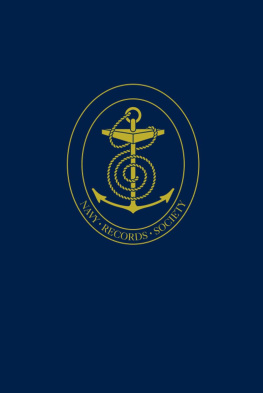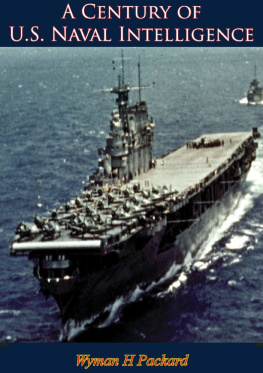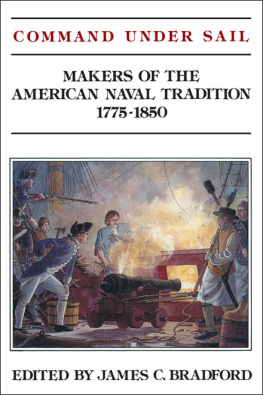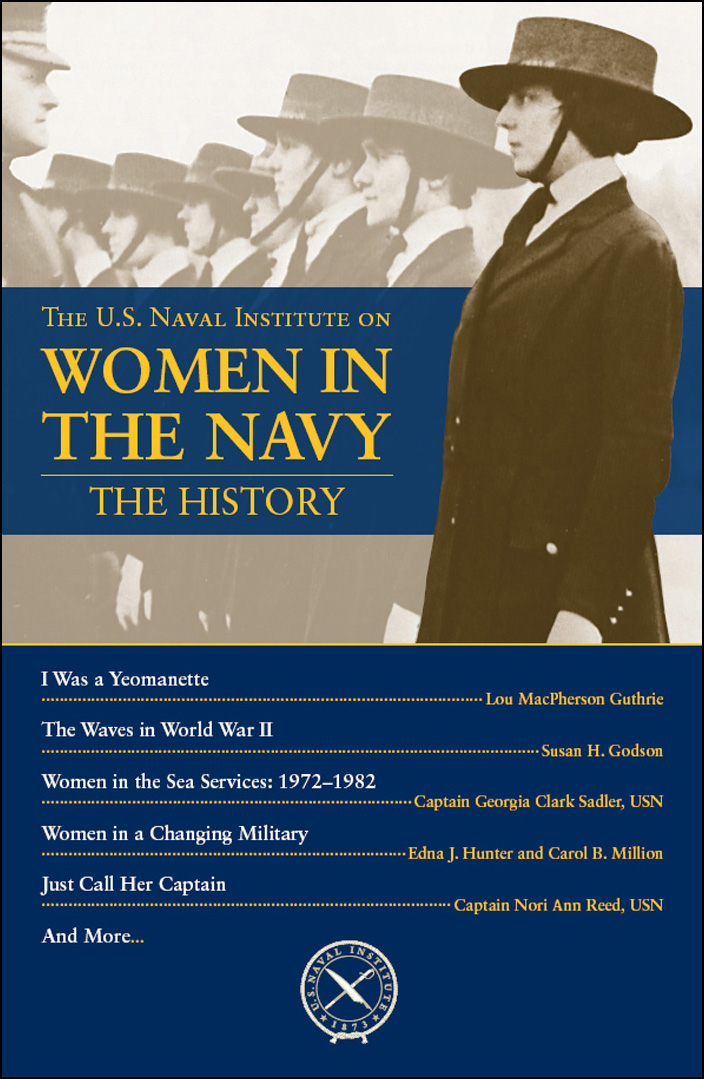
U.S. NAVAL INSTITUTE
Chronicles
For nearly a century and a half since a group of concerned naval officers gathered to provide a forum for the exchange of constructive ideas, the U.S. Naval Institute has been a unique source of information relevant to the nations sea services. Through the open forum provided by Proceedings and Naval History magazines, Naval Institute Press (the book-publishing arm of the institute), a robust Oral History program, and more recent immersion in various cyber activities (including the Naval Institute Blog and Naval Institute News), USNI has built a vast assemblage of intellectual content that has long supported the Navy, Marine Corps, and Coast Guard as well as the nation as a whole.
Recognizing the potential value of this exceptional collection, USNI has embarked on a number of new platforms to reintroduce readers to significant portions of this virtual treasure trove. The U.S. Naval Institute Chronicles series focuses on the relevance of history by resurrecting appropriate selections that are built around various themes, such as battles, personalities, and service components. Available in both paper and eBook versions, these carefully selected volumes help readers navigate through this intellectual labyrinth by providing some of the best contributions that have provided unique perspectives and helped shape naval thinking over the many decades since the institutes founding in 1873.

Naval Institute Press
291 Wood Road
Annapolis, MD 21402
2015 by the U.S. Naval Institute
All rights reserved. No part of this book may be reproduced or utilized in any form or by any means, electronic or mechanical, including photocopying and recording, or by any information storage and retrieval system, without permission in writing from the publisher.
Library of Congress Cataloging-in-Publication Data
United States Naval Institute.
The U.S. Naval Institute on women in the Navy: the history.
1 online resource. (U.S. Naval Institute chronicles)
Includes index.
Description based on print version record and CIP data provided by publisher; resource not viewed.
ISBN 978-1-61251-985-2 (epub) 1. United States. NavyWomenHistory. 2. Women sailorsUnited StatesHistory. I. Title.
VB324.W65
359.00820973dc23
2015033198

 Print editions meet the requirements of ANSI/NISO z39.481992 (Permanence of Paper).
Print editions meet the requirements of ANSI/NISO z39.481992 (Permanence of Paper).
23 22 21 20 19 18 17 16 15 9 8 7 6 5 4 3 2 1
First printing
Table of Contents
Guide
CONTENTS
BECAUSE THIS BOOK is an anthology, containing documents from different time periods, the selections included here are subject to varying styles and conventions. Other variables are introduced by the evolving nature of the Naval Institutes publication practices. For those reasons, certain editorial decisions were required in order to avoid introducing confusion or inconsistencies and to expedite the process of assembling these sometimes disparate pieces.
Gender
Most jarring of the differences that readers will encounter are likely those associated with gender. A number of the included selections were written when the armed forces were primarily a male domain and so adhere to purely masculine references. I have chosen to leave the original language intact in these documents for the sake of authenticity and to avoid the complications that can arise when trying to make anachronistic adjustments. So readers are asked to translate (converting the ubiquitous he to he or she and his to her or his as required) and, while doing so, to celebrate the progress that we have made in these matters in more recent times.
Author Biographies
Another problem arises when considering biographical information of the various authors whose works make up this special collection. Some of the selections included in this anthology were originally accompanied by biographical information about their authors. Others were not. Those biographies that do exist have been included. They pertain to the time the article was written and may vary in terms of length and depth, some amounting to a single sentence pertaining to the authors current duty station, others consisting of several paragraphs that cover the authors career.
Ranks
I have retained the ranks of the authors at the time of their publication. As noted above, some of the authors wrote early in their careers, and the sagacity of their earlier contributions says much about the individuals, about the significance of the Naval Institutes forum, and about the importance of writing to the naval servicessomething that is sometimes underappreciated.
Other Anomalies
Readers may detect some inconsistencies in editorial style, reflecting staff changes at the Naval Institute, evolving practices in publishing itself, and various other factors not always identifiable. Some of the selections will include citational support, others will not. Authors sometimes coined their own words and occasionally violated traditional style conventions. Bottom line: with the exception of the removal of some extraneous materials (such as section numbers from book excerpts) and the conversion to a consistent font and overall design, these articles and excerpts appear as they originally did when first published.
THIS PROJECT would not be possible without the dedication and remarkable industry of Denis Clift, the Naval Institutes vice president for planning and operations and president emeritus of the National Intelligence University. This former naval officer, who served in the administrations of eleven successive U.S. presidents and was once editor in chief of Proceedings magazine, bridged the gap between paper and electronics by single-handedly reviewing the massive body of the Naval Institutes intellectual content to find many of the treasures included in this anthology.
A great deal is also owed to Mary Ripley, Janis Jorgensen, Rebecca Smith, Judy Heise, Debbie Smith, Elaine Davy, and Heather Lancaster who devoted many hours and much talent to the digitization project that is at the heart of these anthologies.
TODAY WOMEN ARE SERVING in every branch and nearly every component of the armed forces. But this was not always so. For most of their existence, the armed forces were almost entirely the domain of men. Women serving as nurses and in some other limited capacities were aberrations rather than integrated components of the nations defense. All of that began to change in the latter part of the twentieth century, and it is a process that is nearly complete at the dawn of the twenty-first.
Meeting the challenges of gender integration has been a joint operation that has encompassed all of the armed forces, with the Navy only a part of the larger struggle. But the tribulations encountered by those pioneering women who sought their rightful place in the Navy were unique in many ways, and their story is worth recounting both for its individuality and its importance. From the days of yeomanettes to todays Navywhere women command ships and wear admirals starsthe Naval Institute has chronicled this progression through its books and magazines, creating a historical record and offering the insight that only an open forum can provide.










